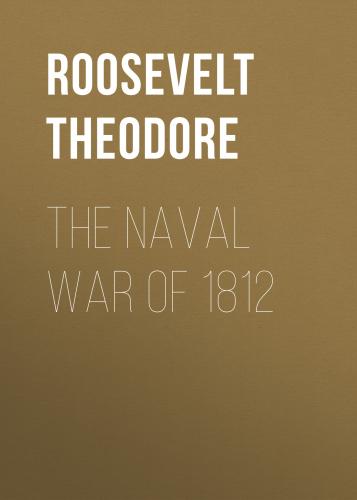As to the officers and crew of a 44-gun frigate, the following was the regular complement established by law: [Footnote: See State Papers, vol. xiv, 159 (Washington, 1834).]
1 captain,
4 lieutenants,
2 lieutenants of marines,
2 sailing-masters,
2 master's mates,
7 midshipmen,
1 purser,
1 surgeon,
2 surgeon's mates,
1 clerk,
1 carpenter,
2 carpenter's mates,
1 boatswain,
2 boatswain's mates,
1 yeoman of gun-room,
1 gunner,
11 quarter gunners,
1 coxswain,
1 sailmaker,
1 cooper,
1 steward,
1 armorer,
1 master of arms,
1 cook,
1 chaplain.
__
50
120 able seamen, 150 ordinary seamen, 30 boys, 50 marines. ___ 400 in all.
An 18-gun ship had 32 officers and petty officers, 30 able seamen, 46 ordinary seamen, 12 boys, and 20 marines—140 in all. Sometimes ships put to sea without their full complements (as in the case of the first Wasp), but more often with supernumeraries aboard. The weapons for close quarters were pikes, cutlasses, and a few axes; while the marines and some of the topmen had muskets, and occasionally rifles.
In comparing the forces of the contestants I have always given the number of men in crew; but this in most cases was unnecessary. When there were plenty of men to handle the guns, trim the sails, make repairs, act as marines, etc., any additional number simply served to increase the slaughter on board. The Guerrière undoubtedly suffered from being short-handed, but neither the Macedonian nor Java would have been benefited by the presence of a hundred additional men. Barclay possessed about as many men as Perry, but this did not give him an equality of force. The Penguin and Frolic would have been taken just as surely had the Hornet and Wasp had a dozen men less apiece than they did. The principal case where numbers would help would be in a hand-to-hand fight. Thus the Chesapeake having fifty more men than the Shannon ought to have been successful; but she was not, because the superiority of her crew in numbers was more than counterbalanced by the superiority of the Shannon's crew in other respects. The result of the battle of Lake Champlain, which was fought at anchor, with the fleets too far apart for musketry to reach, was not in the slightest degree affected by the number of men on either side, as both combatants had amply enough to manage the guns and perform every other service.
In all these conflicts the courage of both parties is taken for granted: it was not so much a factor in gaining the victory, as one which if lacking was fatal to all chances of success. In the engagements between regular cruisers, not a single one was gained by superiority in courage. The crews of both the Argus and Epervier certainly flinched; but had they fought never so bravely they were too unskilful to win. The Chesapeake's crew could hardly be said to lack courage; it was more that they were inferior to their opponents in discipline as well as in skill.
There was but one conflict during the war where the victory could be said to be owing to superiority in pluck. This was when the Neufchatel privateer beat off the boats of the Endymion. The privateersmen suffered a heavier proportional loss than their assailants, and they gained the victory by sheer ability to stand punishment.
For convenience in comparing them I give in tabulated form the force of the three British 38's taken by American 44's (allowing for short weight of metal of latter).
CONSTITUTION. GUERRIÈRE. 30 long 24's, 30 long 18's, 2 long 24's, 2 long 12's, 22 short 32's. 16 short 32's, ___________________________ 1 short 18. Broadside, nominal, 736 lbs. __________________ real. 684 lbs. Broadside, 556 lbs.
UNITED STATES MACEDONIAN 30 long 24's, 28 long 18's, 2 long 24's, 2 long 12's, 22 short 42's. 2 long 9's, ___________________________ 16 short 32's, Broadside, nominal, 846 lbs. 1 short 18. real, 786 lbs. ___________________ Broadside, 547 lbs.
CONSTITUTION JAVA 30 long 24's, 28 long 18's, 2 long 24's, 2 long 12's, 20 short 32's. 18 short 32's, ____________________________ 1 short 24. Broadside, nominal, 704 lbs. ___________________ real. 654 lbs. Broadside. 576 lbs.
The smallest line-of-battle ship, the 74, with only long 18's on the second deck, was armed as follows:
28 long 32's, 28 " 18's, 6 " 12's. 14 short 32's 7 " 18's
or a broadside of 1,032 lbs., 736 from long guns, 296 from carronades; while the Constitution threw (in reality) 684 lbs., 356 from long guns, and 328 from her carronades, and the United States 102 lbs. more from her carronades. Remembering the difference between long guns and carronades, and considering sixteen of the 74's long 18's as being replaced by 42-pound carronades [Footnote: That this change would leave the force about as it was, can be gathered from the fact that the Adams and John Adams both of which had been armed with 42 pound carronades (which were sent to Sackett's Harbor), had them replaced by long and medium 18 pounders, these being considered to be formidable: so that the substitution of 42-pound carronades would, if any thing, reduce the force of the 74] (so as to get the metal on the ships distributed in similar proportions between the two styles of cannon), we get as the 74's broadside 592 lbs from long guns, and 632 from carronades. The United States threw nominally 360 and 486, and the Constitution nominally 360 and 352; so the 74 was superior even to the former
